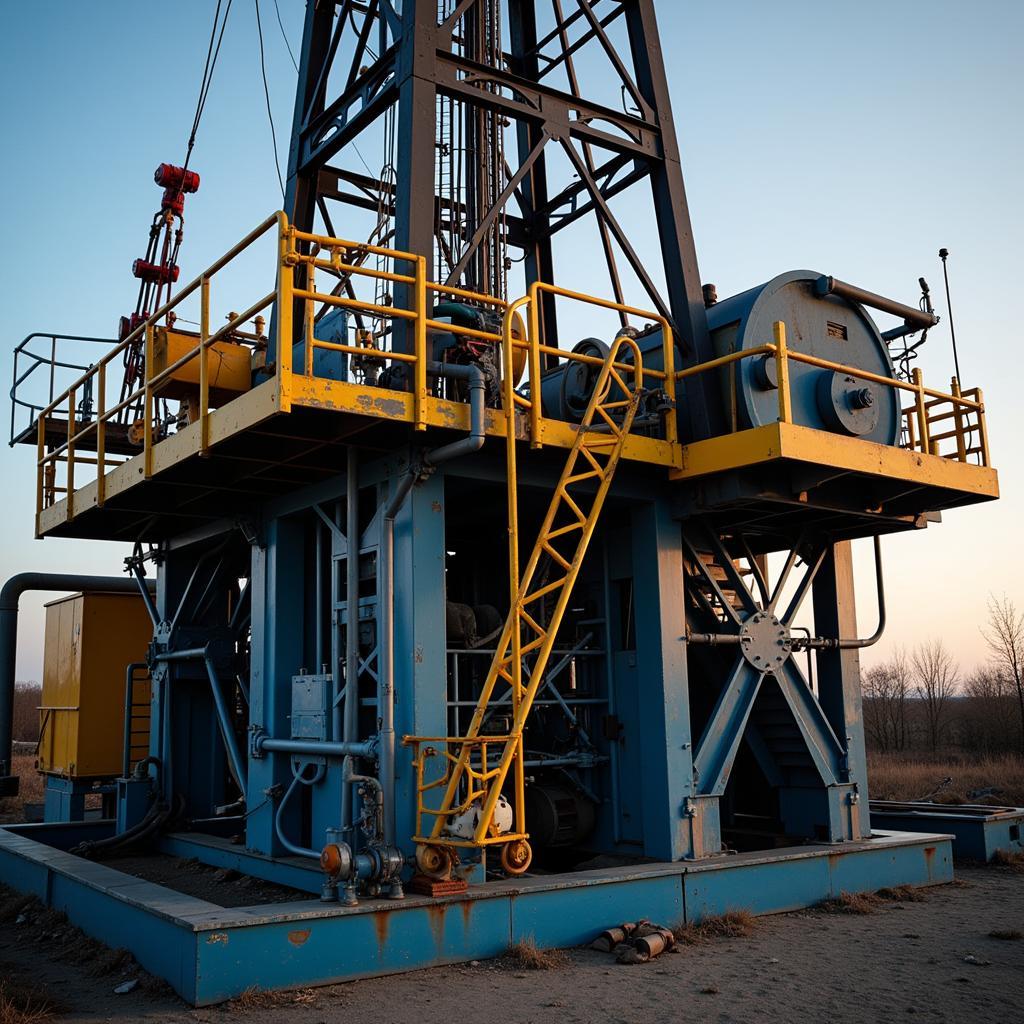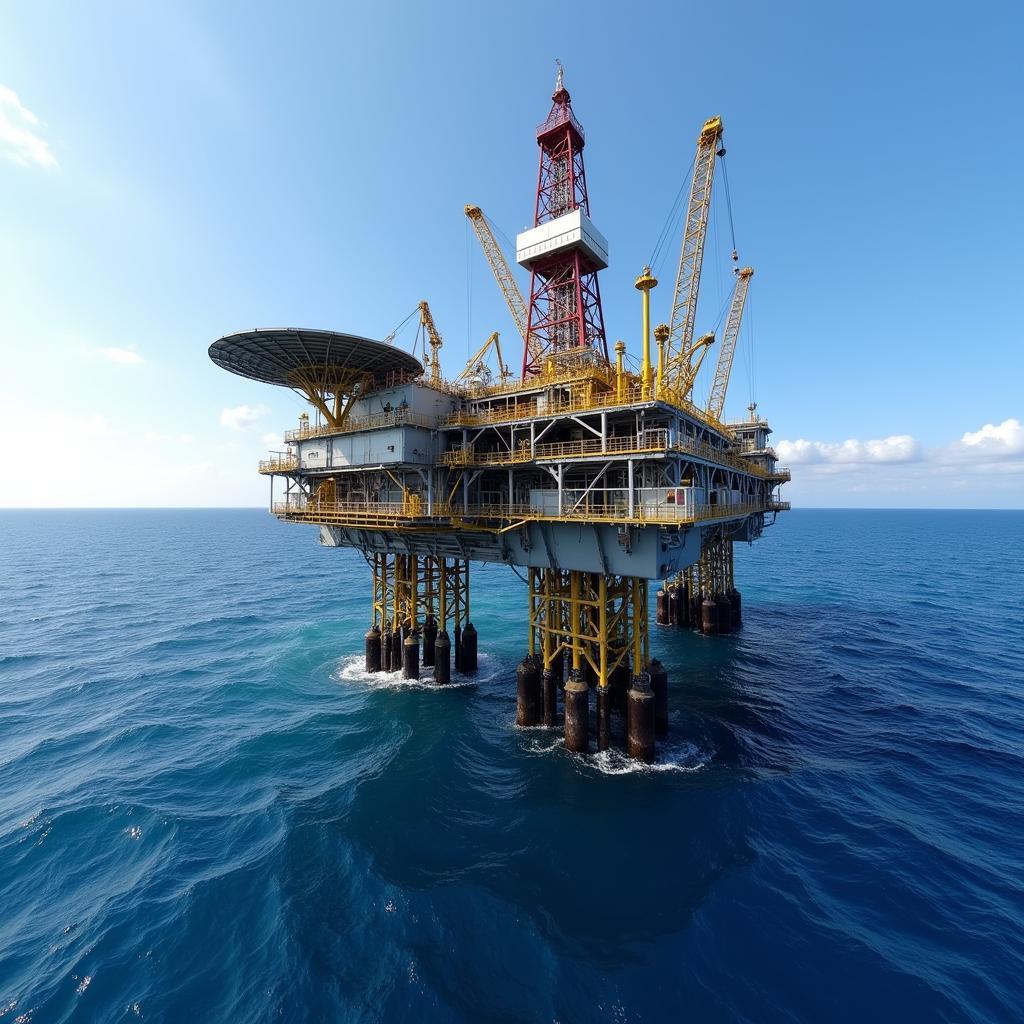Underground Oil, often referred to as petroleum, is a naturally occurring, yellowish-black liquid found in geological formations beneath the Earth’s surface. This fossil fuel, formed over millions of years from the remains of ancient marine organisms, is a crucial energy source, fueling transportation, industry, and countless aspects of modern life.
 Oil extraction
Oil extraction
The Genesis of Underground Oil: A Story Millions of Years in the Making
The formation of underground oil is a fascinating process that unfolds over eons. It begins with the accumulation of organic matter, primarily microscopic plants and animals, on the seafloor. As these organisms die, they settle into the sediment, forming layers of organic-rich mud. Over time, these layers are buried under increasing pressure and heat from overlying sediments. This process, known as diagenesis, transforms the organic matter into kerogen, a waxy substance.
As the kerogen-rich layers sink deeper into the Earth’s crust, temperatures and pressures continue to rise. This intense heat and pressure, over millions of years, break down the kerogen molecules, converting them into hydrocarbons—the building blocks of oil and natural gas. This process, known as catagenesis, occurs at depths where temperatures range from 65°C to 150°C.
From Source Rock to Oil Trap: The Journey of Underground Oil
Once formed, oil doesn’t simply sit in a vast underground pool. It migrates upwards through porous and permeable rocks, driven by buoyancy and pressure differences. This migration continues until the oil encounters an impermeable layer, or trap, which prevents further upward movement.
Oil traps come in various forms, often created by geological processes like folding, faulting, or the juxtaposition of different rock types. These traps play a critical role in concentrating oil into commercially viable reservoirs.
Unlocking the Treasures Below: Exploration and Extraction of Underground Oil
Locating and extracting underground oil is a complex and technologically demanding endeavor. Exploration teams utilize a range of sophisticated tools and techniques, including seismic surveys, gravity surveys, and magnetic surveys, to identify potential oil-bearing formations.
 Oil drilling rig
Oil drilling rig
Once a potential reservoir is identified, drilling operations commence to confirm the presence of oil and assess its commercial viability. If successful, production wells are drilled, and oil is extracted using a variety of methods, including pumping and artificial lift techniques.
The Impact of Underground Oil: A Double-Edged Sword
Underground oil has revolutionized human civilization, providing a readily available and energy-dense fuel source that has powered industrial growth, transportation, and technological advancements. However, this reliance on oil comes at a cost.
The extraction, processing, and combustion of oil have significant environmental impacts, contributing to air and water pollution, greenhouse gas emissions, and climate change. Furthermore, oil spills pose significant threats to marine ecosystems and coastal communities.
Balancing Energy Needs with Environmental Stewardship: The Future of Underground Oil
As we move towards a more sustainable future, it’s crucial to balance our energy needs with the imperative to protect the environment. This requires a multifaceted approach, including:
-
Investing in Renewable Energy Sources: Transitioning towards renewable energy sources like solar, wind, and geothermal will reduce our dependence on fossil fuels.
-
Improving Energy Efficiency: Developing and adopting more energy-efficient technologies in transportation, industry, and buildings will reduce overall energy demand.
-
Carbon Capture and Storage: Developing and deploying technologies to capture and store carbon dioxide emissions from oil and gas production can mitigate their impact on the climate.
Underground Oil: A Resource at a Crossroads
Underground oil has played a pivotal role in shaping the modern world. However, its extraction and use present significant environmental challenges. By embracing sustainable practices and investing in alternative energy sources, we can work towards a future where our energy needs are met while safeguarding the health of our planet.
FAQ
How is underground oil formed?
Underground oil is formed from the remains of ancient marine organisms that settled on the ocean floor millions of years ago. Over time, heat and pressure transformed these organic remains into hydrocarbons, the building blocks of oil.
How is underground oil located?
Geologists use various techniques to locate underground oil, including seismic surveys, gravity surveys, and magnetic surveys. These methods help identify potential oil-bearing formations beneath the Earth’s surface.
What are the environmental impacts of underground oil extraction?
Extracting and processing underground oil can lead to habitat disruption, water pollution, and greenhouse gas emissions. Oil spills pose significant threats to marine life and coastal ecosystems.
What is being done to reduce our reliance on underground oil?
Efforts to reduce our dependence on underground oil include investing in renewable energy sources, improving energy efficiency, and developing carbon capture and storage technologies.
Do you have more questions?
For any inquiries regarding “men being men tumblr”, please contact us:
Phone Number: 0909802228
Email: doibongda@gmail.com
Address: 101 Đ. Lý Chiêu Hoàng, Phường 10, Quận 6, Hồ Chí Minh, Việt Nam
Our dedicated customer support team is available 24/7 to assist you.